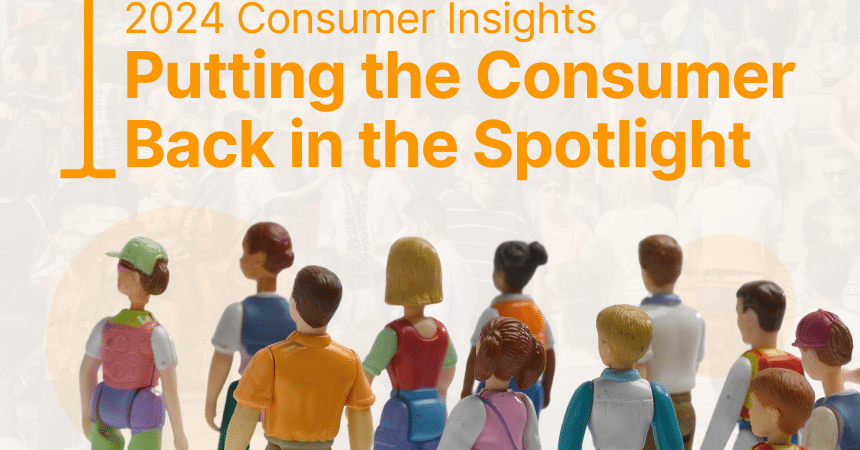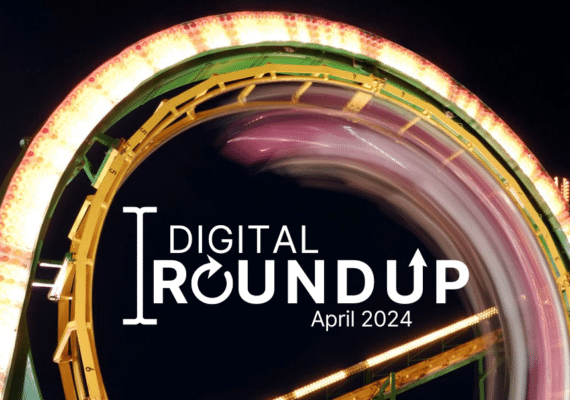Over the past couple of years and more prominently in 2023, there has been a rise in marketing hacks and SEO heists that promise a quick win. In reality, we have seen that these practices don’t pay off. Whilst they may result in short-term vanity metrics, marketing this way means consumers simply won’t buy it (literally).
In 2024 and beyond, consumers are demanding more from brands. Whether that is more durable products, better services or simply making them feel valued, everything should be done with them in mind.
Contents
Durability vs Affordability
The cost of living increasing means you might assume that consumers would prioritise affordability in their purchasing decisions. However, a significant shift in consumer preferences is challenging this convention. The focus is no longer solely on finding the cheapest option; instead, 61% of consumers are prioritising durability over affordability.
Think about the messages you are sharing in your ads, on social media and how your landing pages are positioning your service offering. Pivoting from sales and price-focused messages and more comms about the value and quality of a product may drive higher conversions.
An additional factor of consumers seeking products and services that stand the test of time, could be an environmental impact. There is a shift in consumers becoming increasingly conscious of the environmental impact of fast fashion and disposable goods.
Consumers have invented two terms, Skrinkflation and Skimplation, to discuss how brands have changed their offerings since the cost of living increased. Skrinkflation reflects how inflation has led to smaller product sizes as a cost-cutting measure. Skimplation, on the other hand, points to the decline in service quality due to inflationary pressures.
While companies may view these shifts as survival tactics, consumers aren’t buying into the narrative. Surprisingly, 73% of consumers are willing to continue purchasing from companies that increase prices if they feel valued. This underscores the significance of intangible aspects like customer communication, issue resolution, and overall support. A notable 47% of consumers feel undervalued when encountering difficulties or inadequate support from customer service agents.
It’s time to think about what tools you have in place to track shifts in customer sentiment and whether you’re including this in your current marketing reports.
More empowered and valued consumers
Consumers are becoming more deliberate in their choices, investing more time in the decision-making process. This shift towards conscious decision-making means that consumers are more willing to explore new brands in their search to align with brands that resonate with their values and principles.
Consumers are proactively seeking information about products and brands before making a purchase. The era of instant access to information has led to consumers relying on platforms like Google to gather insights, fostering a more informed purchasing process.
Whether your marketing method has adopted the marketing/sales funnel, flywheel, or the see-think-do-care method, the time consumers are taking to move from seeing the product to purchasing is taking longer.
Whether purchasing in store, or online consumers are researching a purchase before committing. An impressive 55% of consumers in the UK are inclined to research an in-store purchase, rising to 57% for online purchases.
Make sure your 2024 marketing strategy boasts enough content to nurture customers or prospects into converting and they aren’t having to find this information out from one of your competitors instead.
AI will continue to be a part of society
The digital landscape changed dramatically in 2023, as there were significant introductions to artificial intelligence. The rapid adoption of this technology created some concerns, but few among the 18-34 demographic. A notable 39% (consumers aged 18-35) express enthusiasm for conversational answers instead of traditional SERPs, indicating a growing interest in more interactive and dynamic ways of accessing information. Additionally, 42% of this demographic feel comfortable using conversational AI for personalised product recommendations, showcasing a willingness to embrace AI-driven assistance.
Artificial Intelligence is not just changing the way people access information; it’s also regenerating content creation and work processes. Despite the increasing costs of business, there is optimism that AI tools can help reduce some of these costs.
It’s essential to recognise and acknowledge that concerns and apprehension are common reactions to change and especially changes around new technologies. Drawing a parallel, there were initial fears when the internet first came on the scene, which then gave way to widespread acceptance and integration.
As AI continues to revolutionise various industries, it is anticipated to continue to dominate discussions in 2024. There’s a chance that tools and products will boast their “AI features,” turning the term into a bit of a buzzword.
Adopting AI into your business looks completely different for each industry and company. How can you use AI in your marketing? Do you have an AI policy in place to ensure that everyone in the company is using it properly?
Meh-diocrity is over (hopefully)
Google’s latest content update signifies a pivotal shift in content creation, urging creators to prioritise user engagement over merely aiming for higher rankings on Search Engine Results Pages (SERPs). However, most marketers will admit this update has created a catch-22 challenge. All content must still be optimised for search to reach the audience that the content was created for.
The core objective of this update is to eliminate the technological and algorithmic barriers between brands and consumers. By refocusing on the end-user, Google aims to enhance the overall user experience, fostering more meaningful connections between brands and their audiences.
This shift is poised to elevate content quality by discouraging mediocrity in marketing. The emphasis on offering genuine value and engaging content aims to break away from the homogeneity seen in some re-brands, where individuality has been sacrificed. A startling 40% of individuals struggle to differentiate between app designs, emphasising the need for distinctiveness in a cluttered digital landscape.
Consumer fatigue is not limited to marketing; it extends to various forms of media. The prevalence of reboots, remakes, and interconnected universes in films has left some audiences unimpressed, with the term “lazy” being tossed around. This trend underscores the importance of creativity and innovation to captivate increasingly discerning consumers.
Amid these changes, standing out is more critical than ever. Traditional competitor analysis strategies, like mimicking successful SERP content or occupying similar spaces as competitors, are losing effectiveness. Depending on industry dynamics, it may be beneficial to explore unconventional areas where competitors are not present and build a community there.
An illustrative example of this shift is observed in the strategies of major sports brands UFC and WWE. Instead of competing for prime spots on traditional Sports TV channels, these brands have found success on TikTok, engaging and broadcasting content to a different audience, showcasing the importance of adapting to unconventional spaces.
Make your marketing credible
A concerning trend has emerged, with a 24% increase in Americans expressing distrust in the media. There is significant doubt among the public, challenging the credibility of information distributed through news channels.
In response to these challenges, Google has introduced a notable update aimed at rebuilding trust in media sources. This update focuses on Expertise, Authoritativeness, and Trustworthiness, while also introducing a perspectives feature. These enhancements are designed to provide consumers with a broader view of a story, ultimately fostering a sense of credibility by presenting multiple perspectives from trustworthy sources.
As the saying goes, “Trust, but verify,” has never been more relevant. The digital landscape, ripe with #FakeNews and the proliferation of deep fakes facilitated by AI advancements, poses a significant challenge. Brands and celebrities are particularly susceptible to being “catfished,” emphasising the importance of thorough verification before disseminating information.
It may be time to invest in personal branding training for anyone you are looking to position as a credible source in the industry. Whether you use this personal brand to establish your content as trustworthy among consumers, or leverage platform features, it’s important to add credibility to your marketing.
Boomers are more social than ever
In a surprising twist of events, baby boomers are making a significant impact in the digital realm, with a remarkable 57% increase in their presence on TikTok.
Baby boomers are not only doom scrolling on social media platforms like TikTok but are also demonstrating an increased willingness to make online purchases, challenging the notion that certain generations are more predisposed to digital engagement.
Surprisingly, boomers have emerged as active participants in the online marketplace, with a higher likelihood of making digital transactions compared to Gen Z.
There are many reports that often suggest pivoting focus from one generation to another that is more active online. If you are thinking about pivoting your target audience, make sure you are doing so with consideration. Focus on your engaged audience and create tailored content for them to build meaningful connections.
Consumer 2024 insights in summary
Last year, we saw one of the most unexpected crossovers imaginable with Barbi-heimer’s marketing taking over the globe, setting a new level of reach for awareness campaigns to aspire for.
Whilst there is still an important space for brand focused awareness campaigns, as we enter further into 2024, we should expect to see more consumer-centricity marketing. Although there are still some concerns from both marketers and consumers in AI tools, these will enable a more personalised approach to marketing.
Another significant shift in 2024 marketing, will likely be the prioritisation of credibility. Whether it is to alleviate consumer concerns about misinformation or take advantage of new features that showcase credible authority’s opinions, this should be a focus in your marketing strategy.
If you’re looking for marketing training, need a marketing strategy or would like support with your marketing efforts, then get in touch today and we’ll be happy to talk about your requirements.






